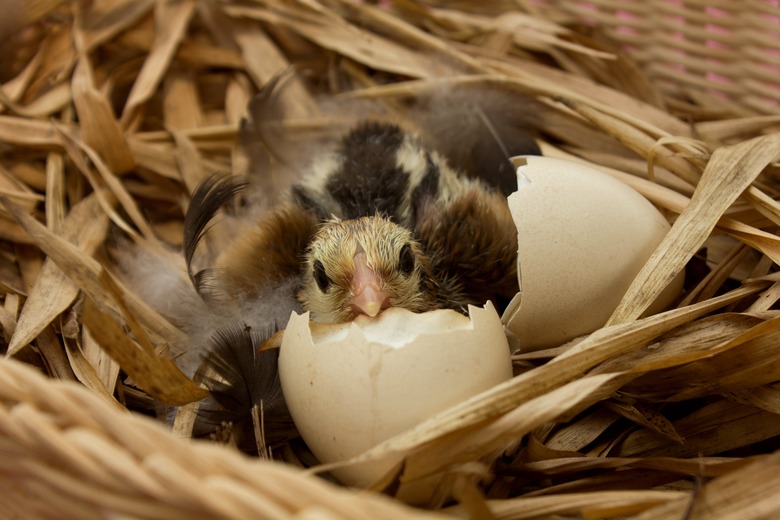Gestation Periods For Birds
An animal's gestation period is the length of time an embryo needs to fully develop. Birds have a simple form of reproduction, explains San Francisco State University. Unlike mammals, a bird's embryo growth occurs outside of the mother's womb. However, the egg membrane offers nourishment for the embryo during its development.
Gestation Periods
Gestation Periods
The length of a gestation period varies from bird to bird. Oftentimes, larger birds require longer gestation periods than smaller birds. For example, muscovy ducks – one of North America's largest ducks – require approximately 35 days for gestation, while smaller ducks have gestation periods of less than 30 days. Smaller perching birds, such as northern mockingbirds, have a gestation period of only 13 to 15 days. A smaller bird of prey, the red-tailed hawk, has a gestation period of 28 to 32 days, while the California condor needs at least 56 days for the gestating period.
Amniotic Eggs
Amniotic Eggs
Birds produce amniotic eggs for the growth of a young bird's embryo. Unlike reptiles and amphibians, a bird's amniotic egg shell has a hard surface, which prevents the embryo from drying out. Several fluid-filled membranes within the egg help the embryo to survive during the gestation period. Directly surrounding the embryo is the amnion, a chamber filled with amniotic fluid. The embryo disposes of wastes through the allantois, the part of the egg that connects the amnion to the albumin, or the "white of the egg." The yolk sac nourishes the embryo during gestation; as the embryo grows, the yolk sac shrinks.
Nesting
Nesting
All birds build nests for laying their eggs. The formation of nests differs among bird species. Small arboreal birds – blue jays, ravens, orioles, wrens – develop nests in the midst of tree branches, while terrestrial birds such as wild turkeys and quail use depressions in tall grasses. Marine-dwelling and freshwater wetland birds create nests on the shores of bodies of water. Many birds of prey have nests on treetops or rocky outcroppings. Most nests are made from a combination of vegetation and mud.
Incubation
Incubation
After a female lays the egg, bird embryos go through the process of incubation. Incubation is when a bird's parents rest on the egg to keep it warm while the embryo develops. Embryos require temperatures ranging from 100 to 112 degrees F to stay warm. If a female lays a group of eggs, known as as clutch, she will wait until all her eggs are ready before she begins incubating. During this period, the male and female of many bird species will share incubation duties. If the male of the species has brighter feathers than the female, he will defend the nest from invaders, while the female takes care of the eggs.
Cite This Article
MLA
Davis, Skip. "Gestation Periods For Birds" sciencing.com, https://www.sciencing.com/gestation-periods-birds-8787645/. 13 March 2018.
APA
Davis, Skip. (2018, March 13). Gestation Periods For Birds. sciencing.com. Retrieved from https://www.sciencing.com/gestation-periods-birds-8787645/
Chicago
Davis, Skip. Gestation Periods For Birds last modified March 24, 2022. https://www.sciencing.com/gestation-periods-birds-8787645/
